Building Code Tips for Homeowners
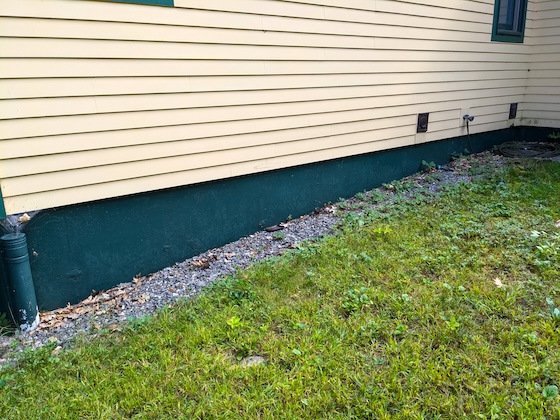
Building Code Tips - The ground slopes away from the house in both directions as it should. The siding is level and you can see how there is more exposed foundation on the left than on the right. Copyright 2024 Tim Carter
Building Code Tips - Code Officials Should Consider Doing More to Help Homeowners
I’m helping my son on the weekends finish the basement in his 3-year-old house. He’s adding 1,300 square feet of finished living space.
We met with the local building inspector a few days ago. Dawn gave us the thumbs up on the rough framing, plumbing, and electrical installations. She’s been doing inspections in Nashua, New Hampshire for eighteen years. Dawn and I exchanged some building code tips.
She discovered I was the Ask the Builder guy towards the end of the inspection. “Oh, I read your columns and watch your videos all the time!” I thanked her and mentioned that if her small four-person building department ever needed a speaker, I’d be happy to stop by and share some stories.
Dawn thought that might be a good idea and said she’d talk to her boss about my suggestion. I pondered about the most helpful things to share with building inspectors in Nashua and all over the USA as I drove north back to my home after the inspection.
Building Code Sections Ignored by Some Builders
The top three problems I solve week-in-week-out seemed worthy of discussion with building inspectors. I've become a quasi-ombudsman between homeowners, code officials, and manufacturers for 30+ years, being Ask the Builder. You might be one of the many homeowners I’ve talked with on the phone, or I might have answered your email trying to help you. The top three problems I deal with each week are:
- wet leaky basements, crawlspaces, and soggy yards
- roof leaks
- water leaks under doors and leaks caused by inferior deck attachment to a house
You may not know this but your local building code enforcement officer has the ability to make the building code more robust in your city or town. The building code you see online is a model code. Most cities and towns adopt it because they can’t afford to invest the time to develop their own code.
A one-size-fits-all building code works for many things but not for all things. This is why local officials can modify the code to suit their housing stock, the local conditions, and ingrained customs.
Foundation Height Often Wrong
The code addresses foundation height. There’s a small section that discusses how high a foundation must be above the ground next to it. Keep in mind that the distance the code mentions is a minimum. I feel the distance should be double what the code says.
The building code also requires the ground around a house must slope away from the foundation. Try to visualize your house being at the top of a hill. In reality, it’s easy to achieve this requirement but too many builders put foundations too low into the ground causing major drainage issues.
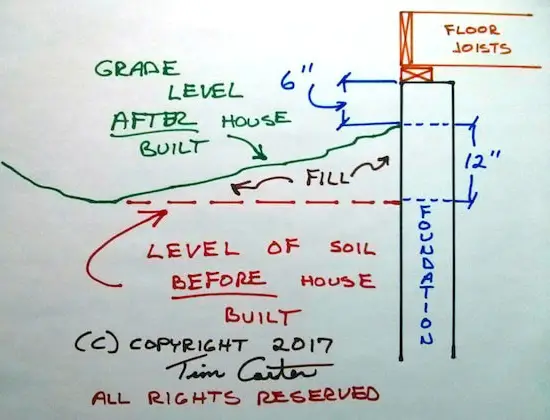
The issue is these mission-critical items don’t seem to be enforced in many situations. Based on the number of houses I see that don’t have the ground around the house at the right height and sloping away from the foundation, it’s clear to me inspectors all across the USA are not holding builders’ feet to the fire in this area.
Roof Leaks Caused by Poor Flashings
Roof leaks in a large majority of cases can be traced to defects in the installation of flashings. Flashings are roofing products that connect a roof to something that’s not a roof. You’ll find them around chimneys, skylights, plumbing vent pipes, turbine vents, dormers, valleys, etc.
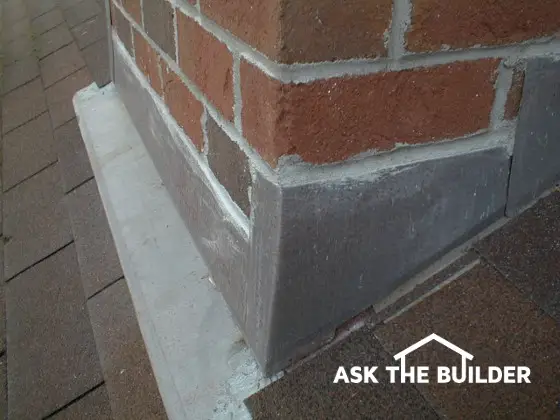
This is a typical flashing found around chimneys that poke through roofs. Photo credit: Tim Carter Copyright 2024
I feel building inspectors should do some heavy lifting in this area. I know they can’t be up on the roof acting as quality-control folks as the roofers work, but maybe it’s a good idea to force builders and roofers to take continuing education classes like other professionals.
Asphalt Shingles Falling Apart
I also feel code officials should help homeowners baking facts into the building code that will help houses last longer. Asphalt roof shingles are the first place to start.
Adding a copper strip across the tops of roofs can triple the life expectancy of asphalt shingles. I was the first person in the world to discover this fact. I cover this discovery and why asphalt shingles fail in my Roofing Ripoff book. I urge you to read the first few chapters for FREE.
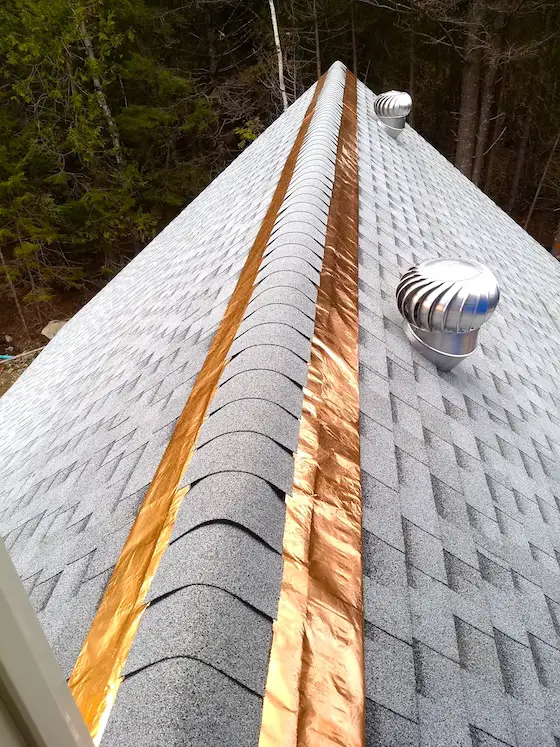
I applied these copper strips on my daughter’s new home five years ago. Invisible atoms of copper wash down onto the shingles each time it rains. This can add 40, or more, years worth of service life to the roof. Copyright 2024 Tim Carter
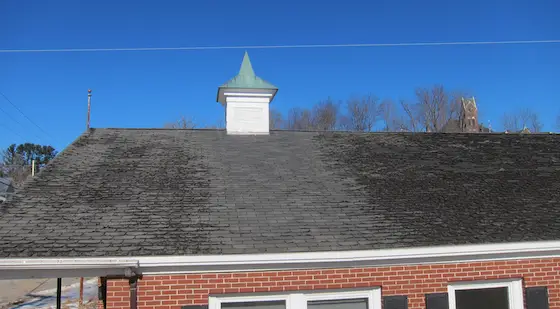
What would you say about a roofer who looked at this photo and denied that copper ions washing off the cupola roof extend the life of asphalt shingles? Would you trust or hire him? Copyright 2024 Tim Carter
Leaks Under Doors & Windows
I solve water seepage under door thresholds many times a month. Once again, the root cause for this, in my opinion, is that builders and carpenters don’t receive bullet-proof training in this skill.
The required flashings to make door thresholds waterproof could be installed just after the roof is completed. Building inspectors doing the rough-framing inspection could verify if the door and window flashings are correct at this time since they’re already looking at the framing.
A house is the average person’s biggest investment in their life. People need to know that the most problematic areas of a house are built correctly. There has to be a way to get building departments and inspectors to help out in this respect since they have the power to issue a certificate of occupancy once the house is complete. I’m open to your suggestions and will pass them along to Dawn.
Column 1577
2 Responses to Building Code Tips for Homeowners